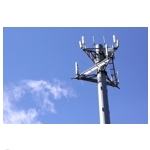 Licensing wireless spectrum generates more than $400 billion a year in economic activity, a new report produced by the Brattle Group for CTIA – The Wireless Association says. This includes the direct and indirect economic impacts of actions on the part of mobile telecom carriers “but excludes billions more in economic benefits produced by mobile health, mobile education, the app economy and other sectors that use licensed spectrum as a platform for their own business models,” CTIA elaborates in a press release.
Licensing wireless spectrum generates more than $400 billion a year in economic activity, a new report produced by the Brattle Group for CTIA – The Wireless Association says. This includes the direct and indirect economic impacts of actions on the part of mobile telecom carriers “but excludes billions more in economic benefits produced by mobile health, mobile education, the app economy and other sectors that use licensed spectrum as a platform for their own business models,” CTIA elaborates in a press release.
Entitled “Mobile Broadband Spectrum: A Vital Resource for the American Economy,” the research results show that based on 2013 data wireless spectrum licensing resulted in $172 billion in direct spending on U.S. wireless services and an additional $228 billion in indirect and induced impacts. In addition, the wireless industry paid over $40 billion in federal, state and local taxes in 2013.
Summarizing the report’s conclusions Meredith Atwell Baker, CTIA president and CEO, stated: “Licensed spectrum is vital to the mobile industry and to our nation’s economy. As this report shows, policymakers need to continue to look for hundreds of MHz of additional licensed spectrum so this economic growth is sustained and America remains the global leader in this rapidly changing sector.
“Licensed spectrum serves as the industry’s backbone for network operators to boost speeds and capacity, device manufacturers to develop new products and apps and content developers to create new offerings.”
Licensed Spectrum Economic Benefits
Report results indicate the value Americans place on their mobile telecom services at between $5 trillion to $10 trillion more than what they’re paying for it. The huge discrepancy is largely because “the fiercely competitive mobile mobile sector drives down prices,” CTIA says.
Job creation is another impact of wireless spectrum licensing. According to the report “for every one person employed in the wireless industry, an additional 6.5 people get jobs.”
That’s substantially higher than the multiplier for the manufacturing sector “and higher than any other single segment of the telecommunications sector,” CTIA highlights. As a result of this multiplier effect, the wireless industry supported more than 1.3 million jobs in the U.S. in 2013, the researchers concluded.
“Licensed spectrum is a finite resource that we must deploy efficiently to maximize benefits for all Americans. It fuels other sectors, and its value goes well beyond those measured here,” Coleman Bazelon, a Brattle Group principal said.
“Of the 645.5 MHz of licensed spectrum for commercial mobile use, 98.5 MHz came since the FCC released its National Broadband Plan in 2010 that stated the wireless industry needed 500 MHz by 2020 to meet consumer demands.”

